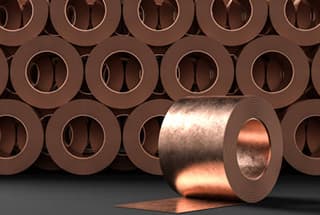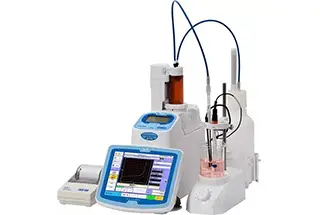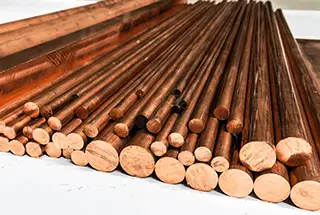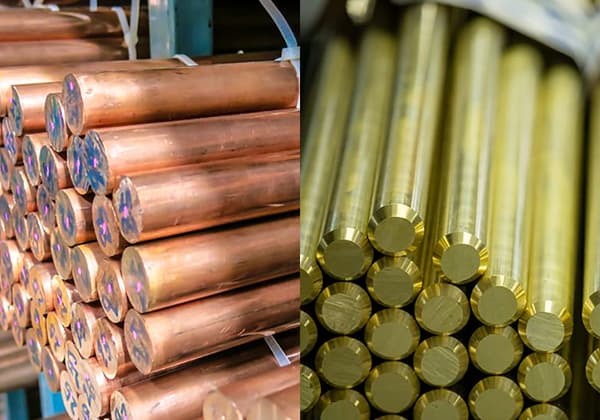
Have you ever wondered why some copper alloys are more suited for specific applications than others? This article dives into the distinct characteristics of brass, tin bronze, red copper, and white copper. It explores their composition, appearance, and uses, helping you understand which alloy fits your needs best. From electrical conductivity to corrosion resistance, discover the key properties that set these materials apart and how they impact everyday applications. Read on to make informed decisions about your next metalworking project.

The earliest evidence of human copper use dates back approximately 10,000 years, with archaeologists discovering copper beads made from native copper in northern Iraq. In China, copper usage can be traced to around 4,000 years ago. Initially, refined copper was used to create objects, but its softness and limited durability led to the development of copper alloys by combining copper with other metals to enhance its properties.
Today, copper alloys are classified into several categories based on their composition and properties:
What is the difference between them?

Red copper, also known as pure copper, is a high-purity copper alloy containing between 99.5% and 99.95% copper, with the remainder consisting of trace impurities. This material is distinguished by its characteristic rose-red color, which develops a purple hue upon oxidation.
The designation system for pure copper grades typically employs the prefix “T” followed by a numerical sequence. As the sequence number increases, the copper content generally decreases. For example, T1 denotes a higher purity than T3. Other pure copper grades include TP2 and TAg0.1, the latter containing a small amount of silver for enhanced properties. Oxygen-free copper grades, which offer superior electrical conductivity and formability, are designated as TU1 and TU2.
Red copper exhibits excellent electrical and thermal conductivity, high ductility, and good corrosion resistance. These properties make it an ideal material for various applications, particularly in the electrical and electronics industries. It is widely used in the manufacture of electrical conductors, including cables and wires, as well as in busbars, connectors, and other components requiring high conductivity and formability.
The material’s high purity also contributes to its superior workability, allowing for efficient forming processes such as drawing, rolling, and extrusion. This characteristic, combined with its resistance to work hardening, makes red copper suitable for applications requiring complex shapes or fine wire production.
In addition to its electrical applications, red copper finds use in thermal management systems, plumbing fixtures, and architectural elements where its aesthetic appeal and corrosion resistance are valued. Its biocompatibility also makes it suitable for certain medical applications.
| Classification | Brand composition | Examples |
| Pure copper | T + sequence number 1 | T1, T3 |
| Pure copper (add other elements) | T + chemical symbol of added element + sequence number (1) or content of added element (2) | TP2, TAg0.1 |
| Oxygen free copper | Tu + sequence number (1) | TU1 and TU2 |

Brass is a versatile alloy primarily composed of copper and zinc, with copper being the predominant element. While these two metals form the base, other elements such as lead, tin, aluminum, manganese, and nickel are often incorporated to enhance specific properties like hardness, strength, machinability, and corrosion resistance. The distinctive golden hue of brass varies with its composition, typically becoming more reddish with higher copper content.
The classification of brass is generally based on its copper content, denoted by the letter “H” followed by the percentage of copper. For instance, H59 contains approximately 59% copper, while H90 has about 90% copper. More complex brass alloys are designated using an extended nomenclature that includes the chemical symbol of significant alloying elements and their respective percentages. For example, HPb89-2 indicates a brass alloy with 89% copper and 2% lead.
Brass exhibits excellent mechanical properties, including good ductility, formability, and wear resistance. Its relatively low melting point (ranging from 900°C to 940°C depending on composition) facilitates casting and machining processes. The alloy’s inherent softness, combined with its wear resistance, makes it ideal for applications in valves, pipelines, and fluid handling systems where frequent actuation is required.
Moreover, brass possesses notable acoustic properties, which has led to its widespread use in musical instruments such as trumpets, trombones, and saxophones. The material’s ability to be easily worked and its resistance to corrosion have made it a preferred choice in the manufacture of cartridge cases for firearms, as well as in decorative architectural elements and marine hardware.
In industrial applications, brass is often selected for its electrical and thermal conductivity, which, while not as high as pure copper, is still significant. This property, coupled with its corrosion resistance, makes brass suitable for electrical components and heat exchangers in less aggressive environments.
Related reading: Types of Brass

Bronze is an alloy that has been utilized since antiquity. The earliest form, known as tin bronze, was primarily composed of copper and tin.
Over time, the definition of bronze has expanded to include all copper alloys except those containing significant amounts of zinc (brass) or nickel (cupronickel). Notable examples of bronze alloys include lead bronze, aluminum bronze, and silicon bronze. Bronze typically exhibits a characteristic reddish-brown color with a blue-green patina when exposed to the elements. In China, bronze alloys are often designated using the letter “Q” followed by the chemical symbol of the primary alloying element and its percentage content, excluding zinc. For instance, Q Al5 denotes an aluminum bronze with approximately 5% aluminum.
Several standardized cast copper alloy grades are widely used in industry. For example, 5-5-5 tin bronze (ZCuSnPb5Zn5) contains approximately 5% each of tin, lead, and zinc, with the balance being copper. Another common alloy is 10-3 aluminum bronze (ZCuAl10Fe3), which contains about 10% aluminum and 3% iron. Tin bronze alloys are renowned for their excellent castability and minimal shrinkage during solidification, making them ideal for manufacturing precision components such as turbine blades, gears, bearings, and valve seats in demanding applications.
Each bronze alloy offers unique properties suited to specific applications. For instance, aluminum bronzes provide superior strength and corrosion resistance, particularly in marine environments, while lead bronzes offer enhanced machinability and are often used in bushings and bearings. The selection of a particular bronze alloy depends on the specific requirements of the application, including mechanical properties, corrosion resistance, wear resistance, and ease of fabrication.

White copper, also known as nickel silver or German silver, is an alloy primarily composed of copper and nickel, with zinc often added as a third component. Its distinctive silver-white appearance belies its copper-based composition. While specific designations can vary by region and application, common nomenclatures include the “CUXXX” system in some standards.
White copper alloys are broadly categorized into two main types based on their primary applications:
1. Structural White Copper: These alloys are prized for their excellent corrosion resistance, particularly in marine environments, and their ability to maintain a lustrous finish. They exhibit good mechanical properties, including strength and ductility. Common grades include:
2. Electrical White Copper: These alloys are engineered for their specific electrical and thermal properties, particularly their high electrical resistivity and low temperature coefficient of resistance. A notable grade is:
| Ordinary white copper (binary) | B + nickel (containing cobalt) content | For example: B5, B30. |
| Complex white copper (more than three yuan) | B + the second main added element symbol + the content of elements other than copper (numbers are separated by “one”) | For example: BZn15-20, BA16-1.5, BFe30-1-1. |
| Note (1): copper content decreases with the increase of serial number.Note (2 ): the element content is the nominal percentage content (the same below). | ||
In terms of pricing, copper alloys exhibit a distinct hierarchy, with pure copper (often referred to as red copper) commanding the highest price point. This is primarily due to its superior electrical and thermal conductivity, as well as its excellent corrosion resistance. Following pure copper, cupronickel (also known as white copper) ranks second in cost. This alloy, typically composed of copper and nickel, offers enhanced strength and corrosion resistance, particularly in marine environments.
Bronze, an alloy primarily consisting of copper and tin, occupies the third position in the price spectrum. Its cost varies depending on the specific composition, with some specialized bronzes (such as aluminum bronze or silicon bronze) potentially commanding higher prices due to their unique properties.
Brass, an alloy of copper and zinc, is generally the most economical option among copper alloys. Its lower cost, combined with good machinability and attractive appearance, makes it a popular choice for various applications. However, it’s crucial to note that despite being the least expensive copper alloy, brass still carries a significantly higher price tag compared to ferrous metals like iron or steel.
This pricing structure reflects not only the raw material costs but also the specific properties, manufacturing processes, and market demand for each alloy. When selecting materials for engineering applications, it’s essential to consider not just the initial material cost, but also factors such as longevity, performance in the intended environment, and overall lifecycle costs.








